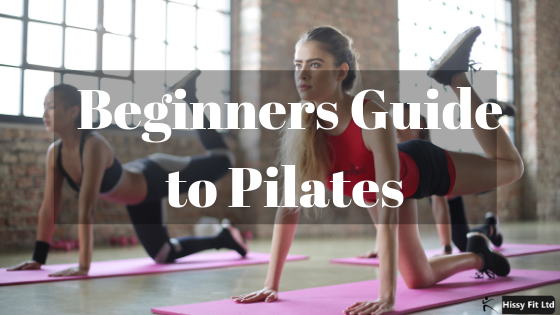Pilates, pronounced Pi-la-tees was developed in the 1920s by Joseph Pilates.
Old Joe strongly believed that the mind and body were linked and, that this form of training could help in synchronising them. The practice itself focuses on improving tone, flexibility and balance.
It can seem quite easy, perhaps even slow in the beginning, which can somewhat put a lot of people off, as they don’t necessarily feel like they’ve just ran a marathon, but it’s important to understand that in Pilates, its the quality of the movements that are valued over quantity of repetitions.
There’s also a lot of focus on controlled breathing (woohoo – we can all do that), which helps you to perform each exercise with maximum power and efficiency and in doing so, helps to reduce stress! Winner winner.
What is Pilates?
Pilates is a form of exercise which strengthens the body, keeping it flexible, symmetrical and aligned, with good posture – all powered by creating a strong core area in the middle of the body. Pilates exercises can be done by lying or standing on a mat and using aids like stretchy bands or by using specialised equipment like the Reformer, Cadillac and Wunda Chair .’ Granted, these look as though they could be some sort of Medieval torture devices, but they are specifically designed to ensure you get the most from the movements performed.
How to prepare for your first class.
The less you think you know, the better! You’re instructor will teach you the best technique for each movement and how to engage yourself correctly.
What should you wear?
Leggings or the likes, something you can move easily in, paired with a a top. The tighter the clothing, the easier it will be for your instructor to see how you’re moving and ensure you’re in exactly the right position. Bare feet are best!
What Happens in a Pilates Class?
There are different types, but most people start off with a basic mat class. In this you’ll spend a lot of the time lying on the floor doing movements that feel really small but have huge payoffs! Breathing – Learning to breath may sound pretty daft, but you’d be surprised how little we actually control our breath. All the moves performed in Pilates co-ordinate with your breath, mastering the breathing techniques is imperative to mastering the training.
You’re instructor will demonstrate a move and will then observe the class by walking around, ensuring everyone is in the right position. They might even move you about a bit or reposition you if need be. For this reason, the smaller the class you choose the better!
How many times a week is Pilates best to practice?
If it’s your main fitness activity, ideally twice a week. If you’re combining it with other high impact exercise, then once a week is good. Most of the exercises can be practised at home, so your motivation levels will be the clincher!
What will Pilates do for my body?
Pilates is designed to tone the muscles rather than bulk them. It improves posture dramatically and even flattens tummies. It helps in reducing stress and studies have shown that it can help improve sleep. Because it strengthens your core it can also help in the reduction of back pain. Doing Pilates will burn calories but it won’t cause you to shed lots of fat – it’s more about conditioning muscles and building strength!
So, there you have it. You’re ready to go jump on the mat!
Find out more on our Pilates classes here
Sign up to our next Pilates course here

